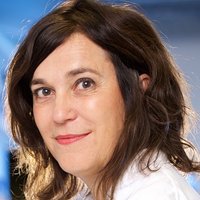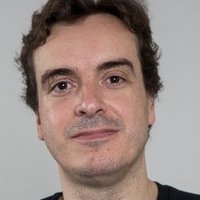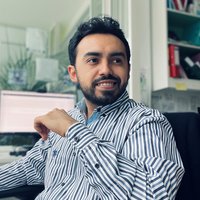HIV Science
- Duration: 8 weeks
- Effort: 20 hours
- Pace: ~2h30/week
- Languages: English and french
What you will learn
At the end of this course, you will be able to:
- Summarize the status of the HIV epidemic in the world
- Describe the immune mechanisms to tackle the virus and how HIV is able to evade them
- Report exceptional individuals who control the infection and animal models of spontaneous protection
- Obtain insights into viral reservoirs and state of the art knowledge on post-treatment control
- Explain clinical management of HIV infection
- Discuss the future perspectives on treatment and prevention.
Description
Since the start of the epidemic HIV has infected over 79 million people and provoked more than 36 million deaths. Today, HIV replication can be efficiently controlled by antiretroviral treatment. AIDS-related deaths have been reduced by half since 2010. However, HIV infection remains a major g global health issue. One third of people living with HIV does not have access to antiretroviral treatment. In addition, there is currently no cure for HIV and antiretroviral treatment needs to be maintained for life. In this MOOC we will review different aspects of HIV infection: from its biological origin and its identification as the causative agent of AIDS, to the current epidemiology, advances in knowledge about viral persistence and host immune responses, vaccine candidates, strategies of eradication and community perspectives by international experts in the respective fields.
10 sessions were updated in 2022.
Format
This MOOC is organized in 6 chapters, each module is composed of 5 sessions. In each session, you will find a 8-10-minute video and a multiple choice test to help you check your understanding. The videos are in English subtitled in French and in English.
With the participation of:
Françoise Barré-Sinoussi, Ahidjo Ayouba, Michaela Muller-Trutwin, François Dabis, Guislaine Carcelain, Elisabeth Menu, Olivier Schwartz, Frank Kirchhoff, Stephane Emiliani, Nicolas Chomont, Anne-Sophie Beignon, Keith Reeves, Lydie Trautman, Hugo Mouquet, Nicolas Manel, Victor Appay, Karine Lacombe, Béatrice Jacquelin, Stephan Paul, Asier Saez-Cirion, Constance Delaugerre, Jade Ghosn, Nicolas Noel, Jean-Michel Molina, Jacqueline Capeau, Laurent Hocqueloux, Jean-Daniel Lelièvre, Maria José Buzon, John Frater, Florence Thune and Sarah Rowland-Jones.
Prerequisites
We recommend a good scientific background (such as a bachelor of life science).
Assessment and certification
To follow this course, you can choose between two options:
- The Discovery Course gives access to videos, quizzes and discussions in the forum. No certificate is issued for this course. Registration is free.
- The Qualifying Course leads to a certificate. In addition to the activities of the Discovery Course, you will have to take a one-hour supervised distance learning exam, consisting of 30 multiple-choice questions (MCQs) and obtaining 18 correct answers. The registration fee for the Qualifying Course is 150€.
Successful completion of the Qualifying Course gives you the opportunity to apply for the Institut Pasteur Online Diploma of Infectious Diseases (DNM2IP), which consists of 5 certificates to Institut Pasteur MOOCs on infectious diseases. To learn more, visit the Institut Pasteur's web page dedicated to this diploma.
Course plan
- • Discovery of the etiological agent of AIDS / Françoise Barré-Sinoussi
• Types, groups, subtypes and recombinants of HIV in the world / Ahidjo Ayouba
• Origin of HIV and animal reservoirs / Michaela Muller-Trutwin
• Epidemiology of HIV and AIDS in the world / François Dabis
• Modes of transmission and natural history of infection / Guislaine Carcelain
- • First steps of viral entry in the body. Mucosae: the entry gate / Elisabeth Menu
• Cellular targets and mechanisms of viral dissemination from cell to cell / Olivier Schwartz
• Replication cycle: facilitating and restriction factors / Frank Kirchhoff
• HIV transcription and latency / Stephane Emiliani
• Cellular and anatomical reservoirs. Viral persistence on cART / Nicolas Chomont
- • Innate immune responses: viral sensing and dendritic cells / Anne-Sophie Beignon
• Innate immune responses : NK cells / Keith Reeves
• Adaptive immune responses : T-cell responses / Lydie Trautman
• Adaptive immune responses : B-cell responses and antibodies / Hugo Mouquet
• Immune evasion: from escape to viral neglect / Nicolas Manel
- • Mechanisms of HIV-induced pathogenesis: inflammation, disruption of lymphoid tissue architectures, premature aging / Victor Appay
• HIV-2 / Sarah Rowland-Jones
• HIV and co-infections (HIV et HCV, HPV, tubeculosis) / Karine Lacombe
• HIV and co-infections (HIV et Covid19) / Karine Lacombe
• Natural control of pathogenesis in natural hosts / Béatrice Jacquelin
• Exposed non-infected individuals / Stephan Paul
• Natural control of infection and HIV remission / Asier Saez-Cirion
• HIV Remission / Asier Saez-Cirion
- • Diagnostic methods / Constance Delaugerre
• Anti-retroviral therapies / Jade Ghosn
• Biomarkers of disease progression and loss of viral control / Nicolas Noel
• Anti-retroviral resistance / Constance Delaugerre
• Treatment as prevention (PreP, PEP and TASP) / Jean-Michel Molina
• Impact of long-term HIV infection on cART: Co-morbidity and non-AIDS mortality / Jacqueline Capeau
- • The antiretroviral treatment tomorrow / Laurent Hocqueloux
• Vaccines, what is there in the pipeline? / Jean-Daniel Lelièvre
• Perspectives to achieve HIV remission or cure ( A. Target reservoirs ) / Maria José Buzon
• Perspectives to achieve HIV remission or cure ( B. Boost immune responses ) / John Frater
• What do PLWH expect next from research? / Florence Thune
Course team
Michaela Müller-Trutwin
Categories
Asier Sáez-Cirión
Categories
Aurélio ORTA RESENDIZ
Categories
Organizations
License
License for the course content

Attribution-NonCommercial-NoDerivatives
You are free to:
- Share — copy and redistribute the material in any medium or format
Under the following terms:
- Attribution — You must give appropriate credit, provide a link to the license, and indicate if changes were made. You may do so in any reasonable manner, but not in any way that suggests the licensor endorses you or your use.
- NonCommercial — You may not use the material for commercial purposes.
- NoDerivatives — If you remix, transform, or build upon the material, you may not distribute the modified material.
License for the content created by course participants

Attribution-NonCommercial-NoDerivatives
You are free to:
- Share — copy and redistribute the material in any medium or format
Under the following terms:
- Attribution — You must give appropriate credit, provide a link to the license, and indicate if changes were made. You may do so in any reasonable manner, but not in any way that suggests the licensor endorses you or your use.
- NonCommercial — You may not use the material for commercial purposes.
- NoDerivatives — If you remix, transform, or build upon the material, you may not distribute the modified material.





